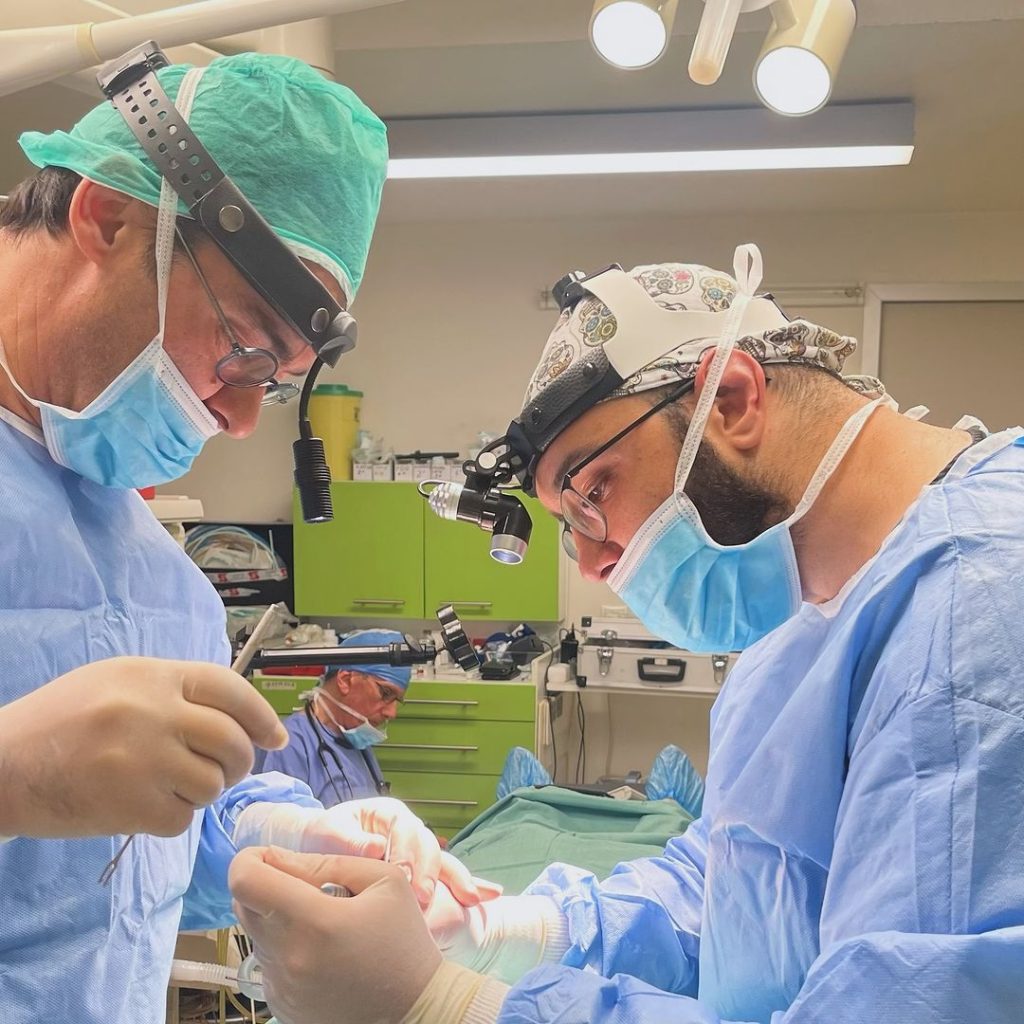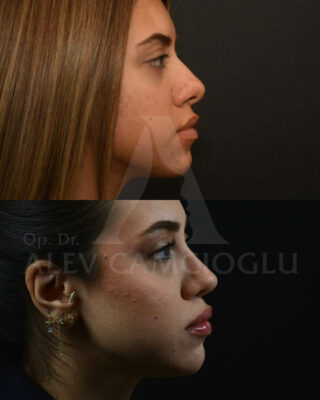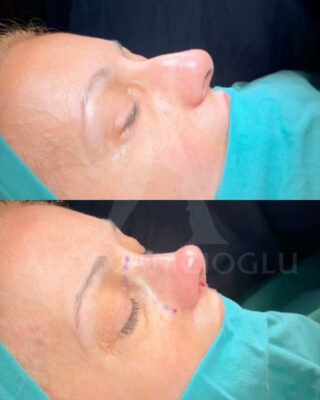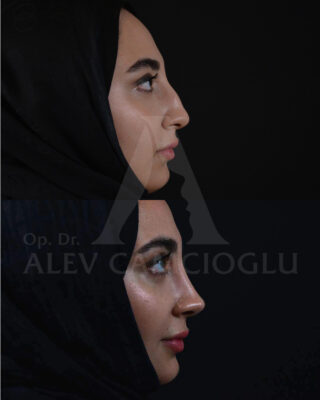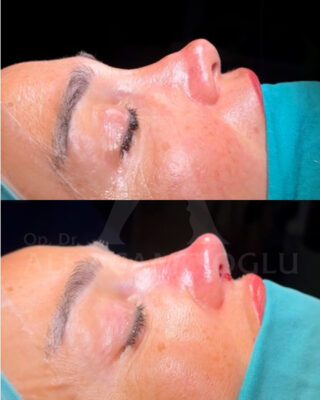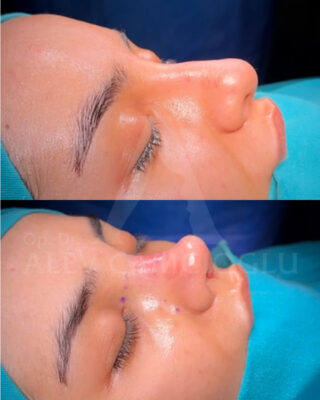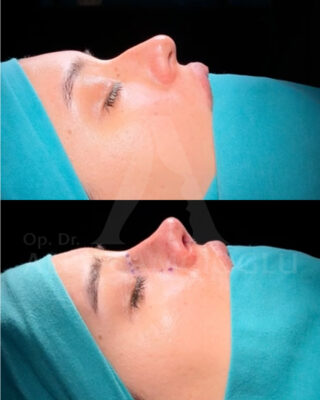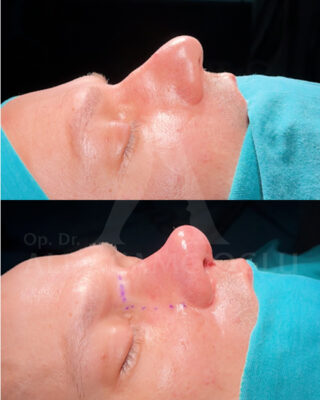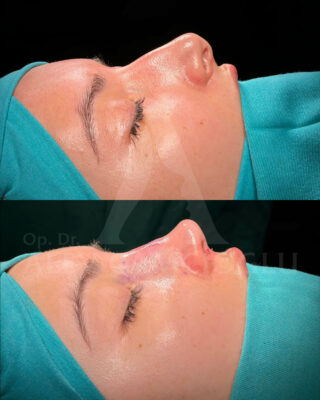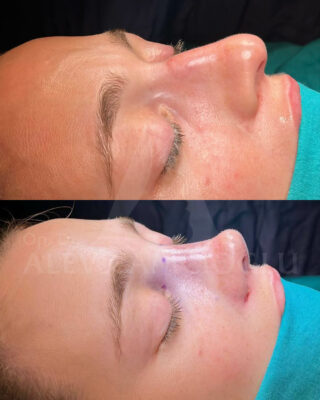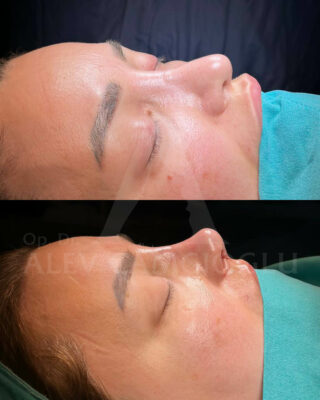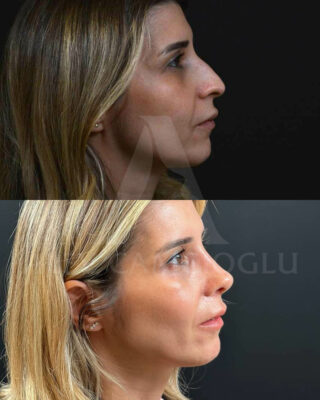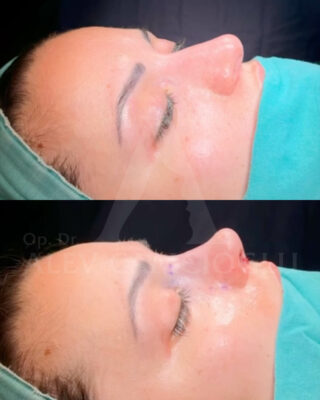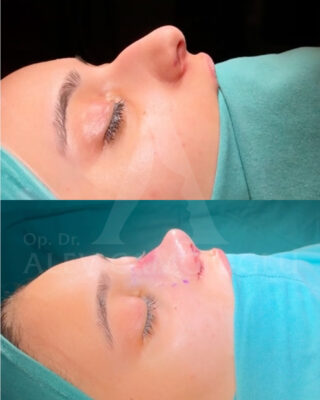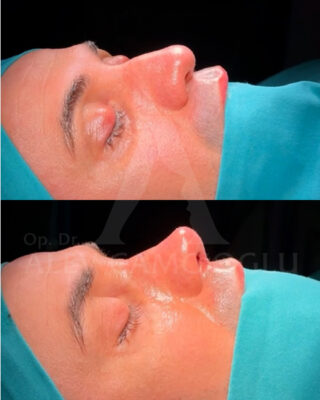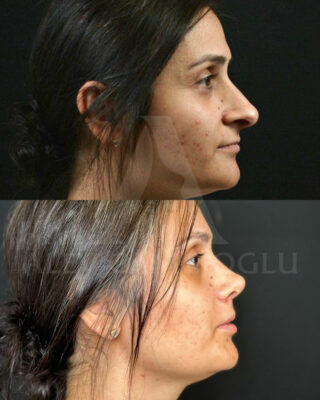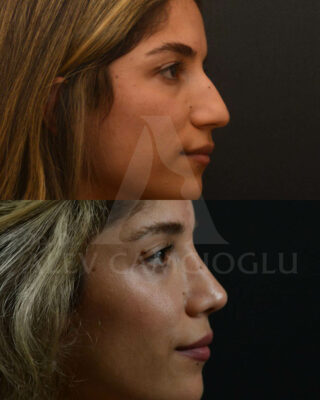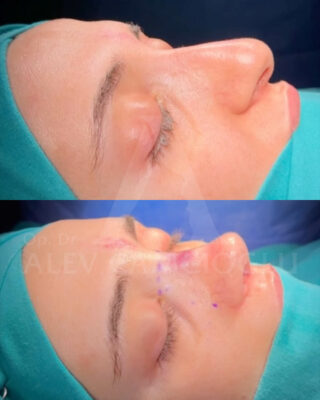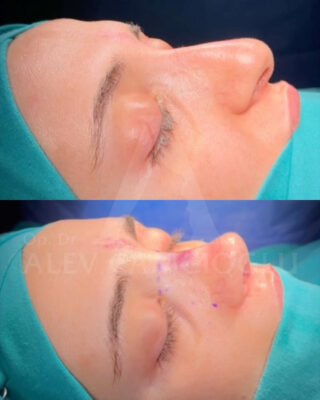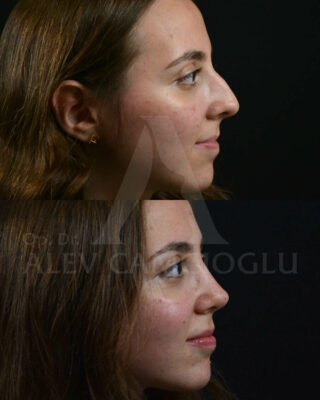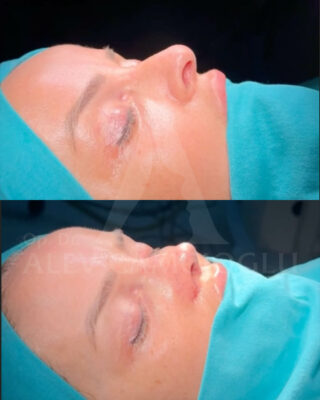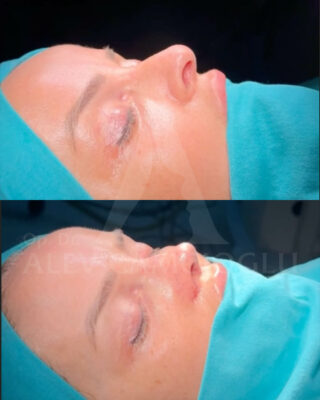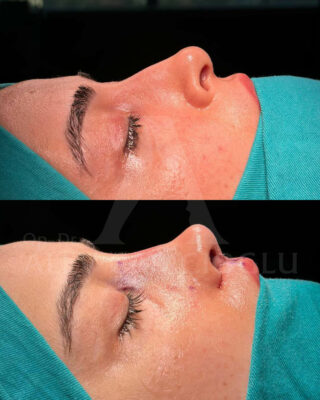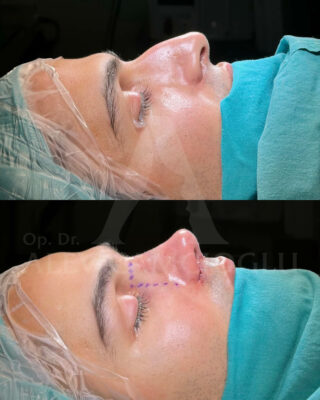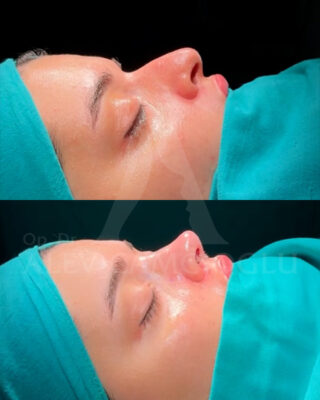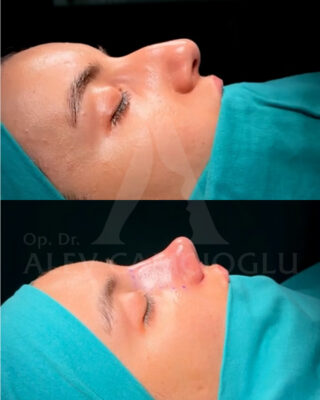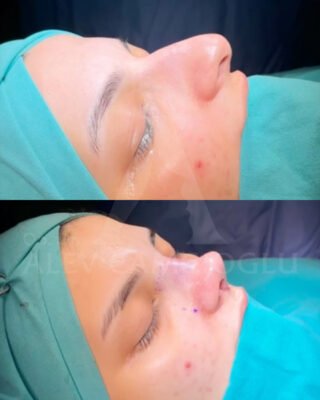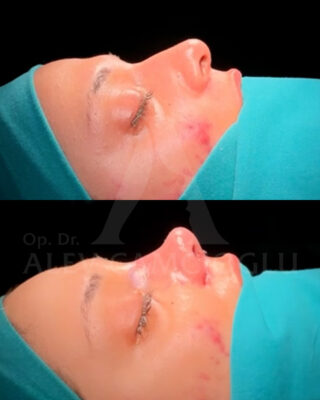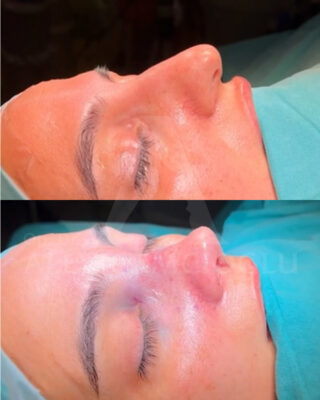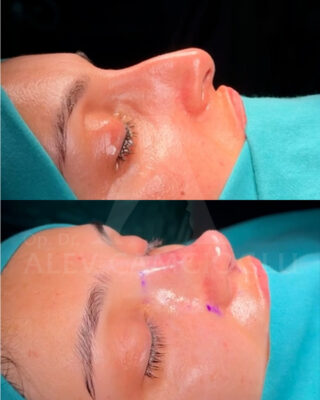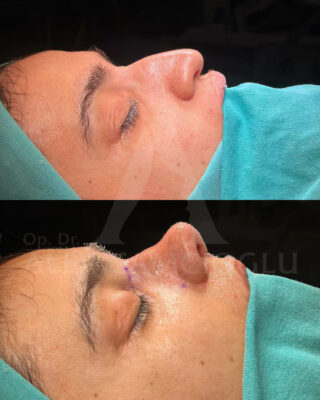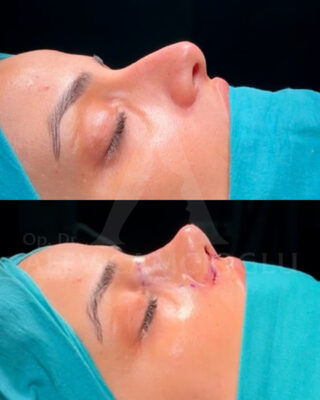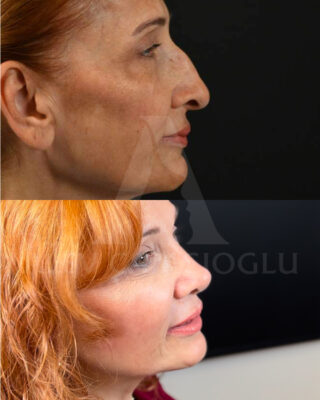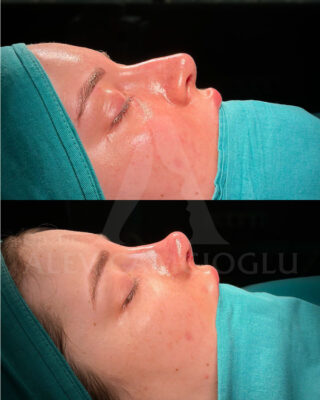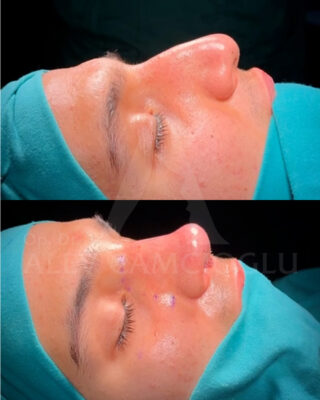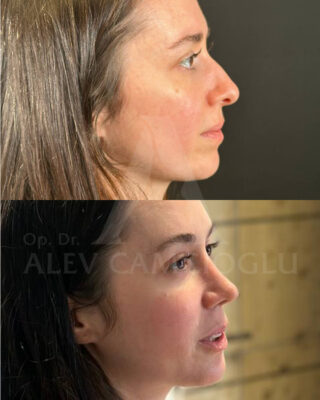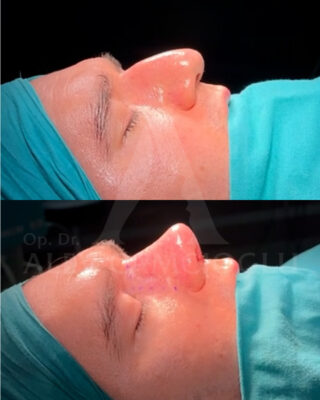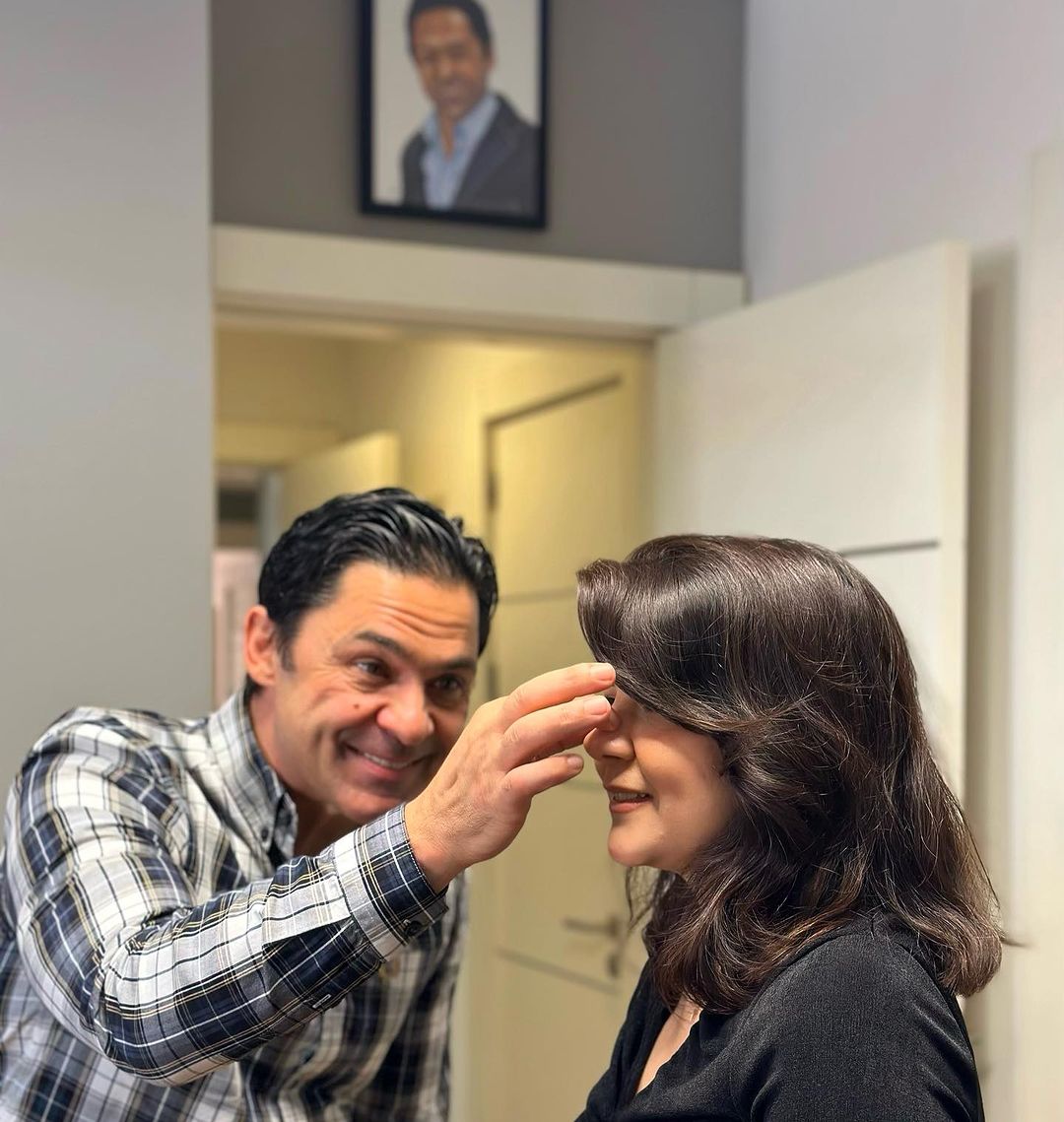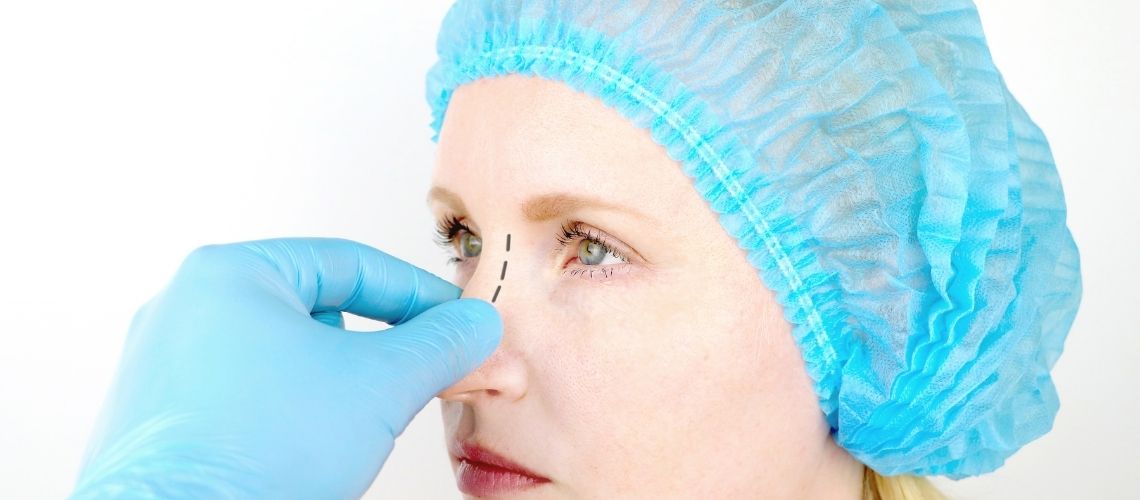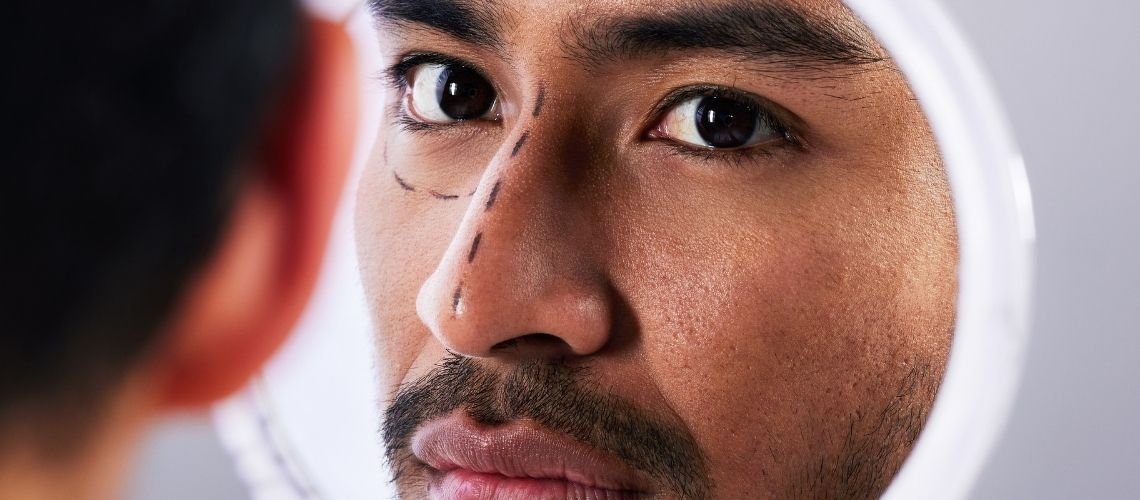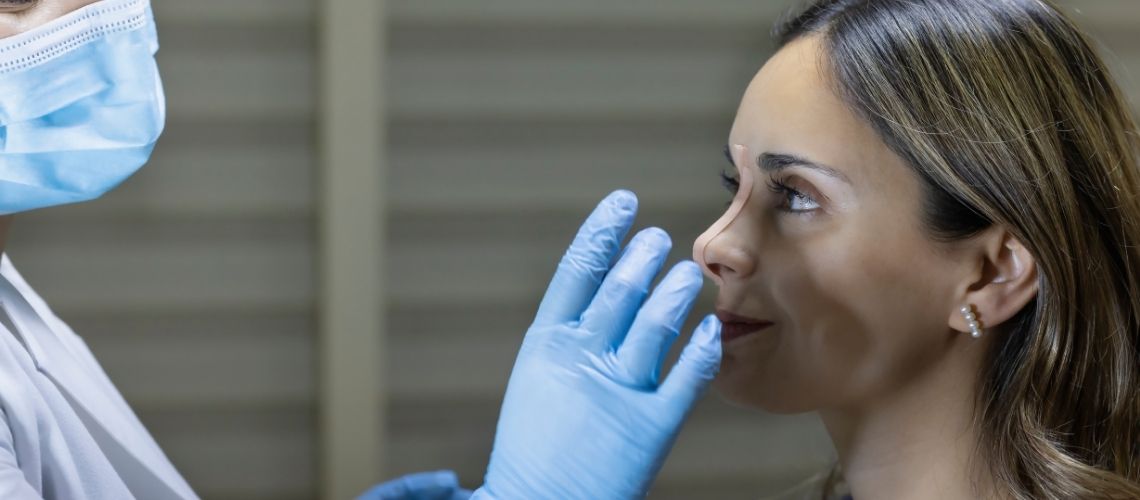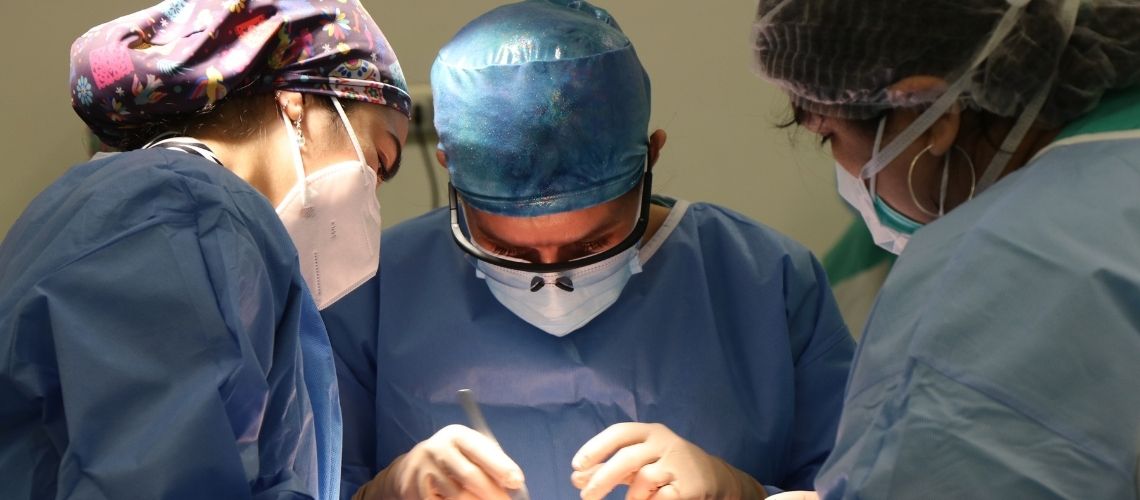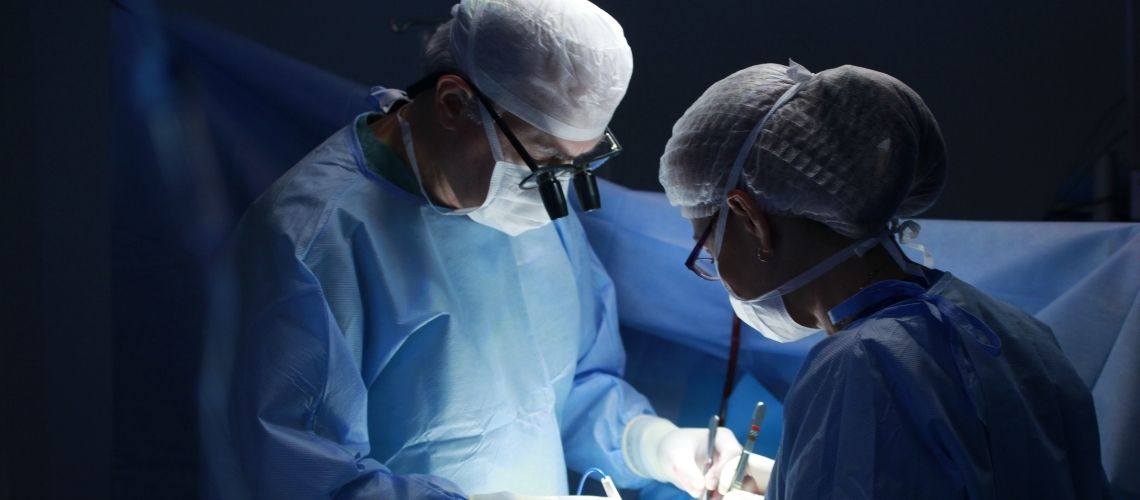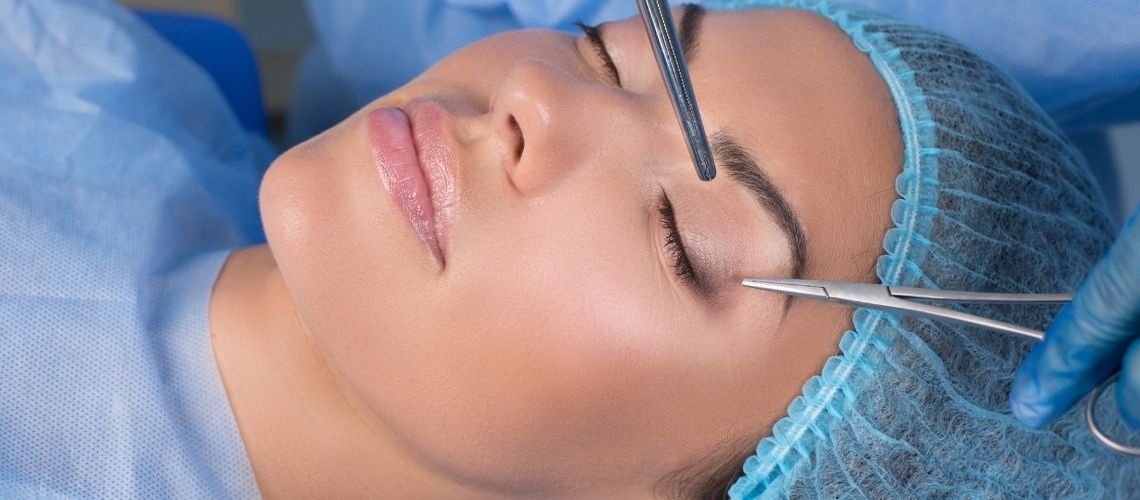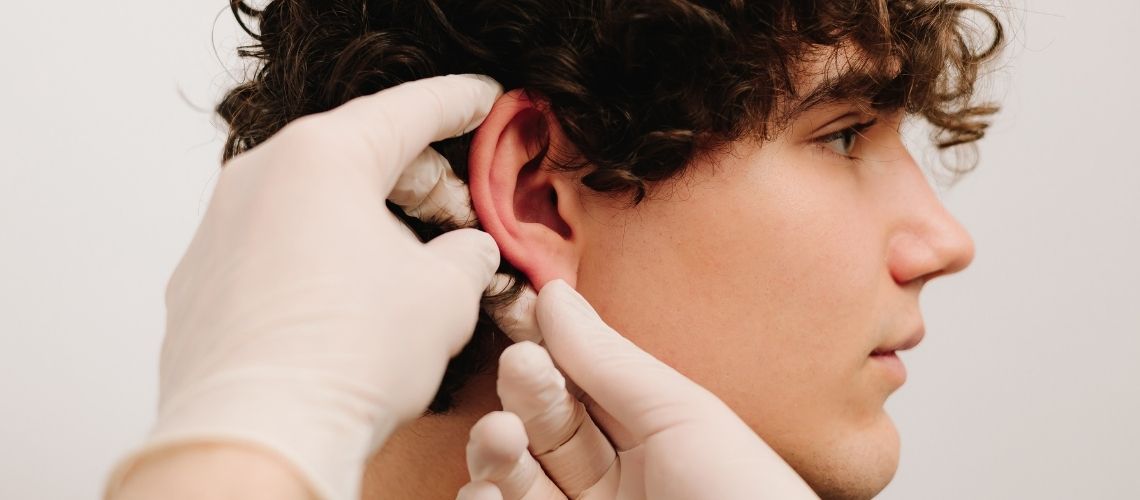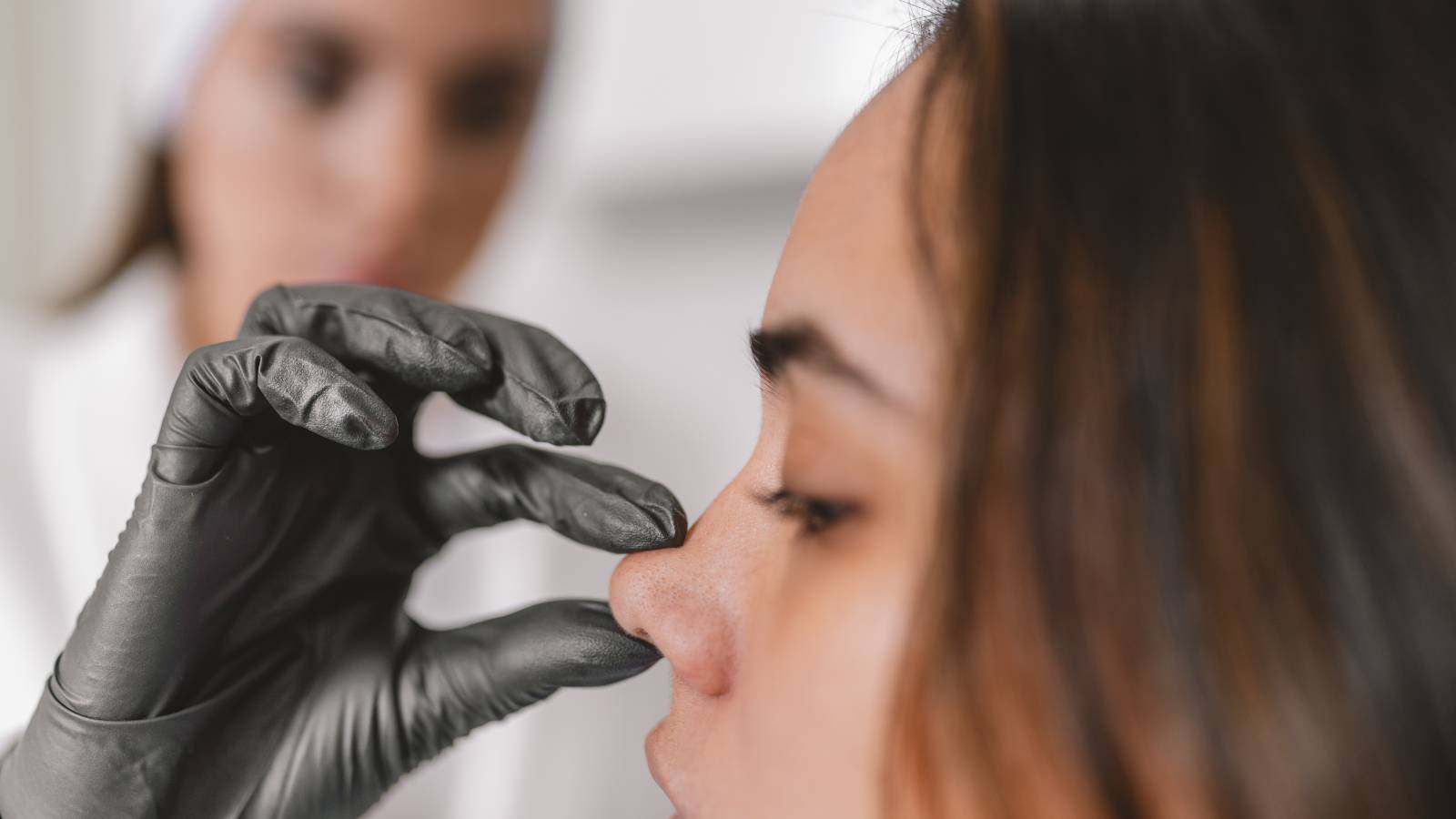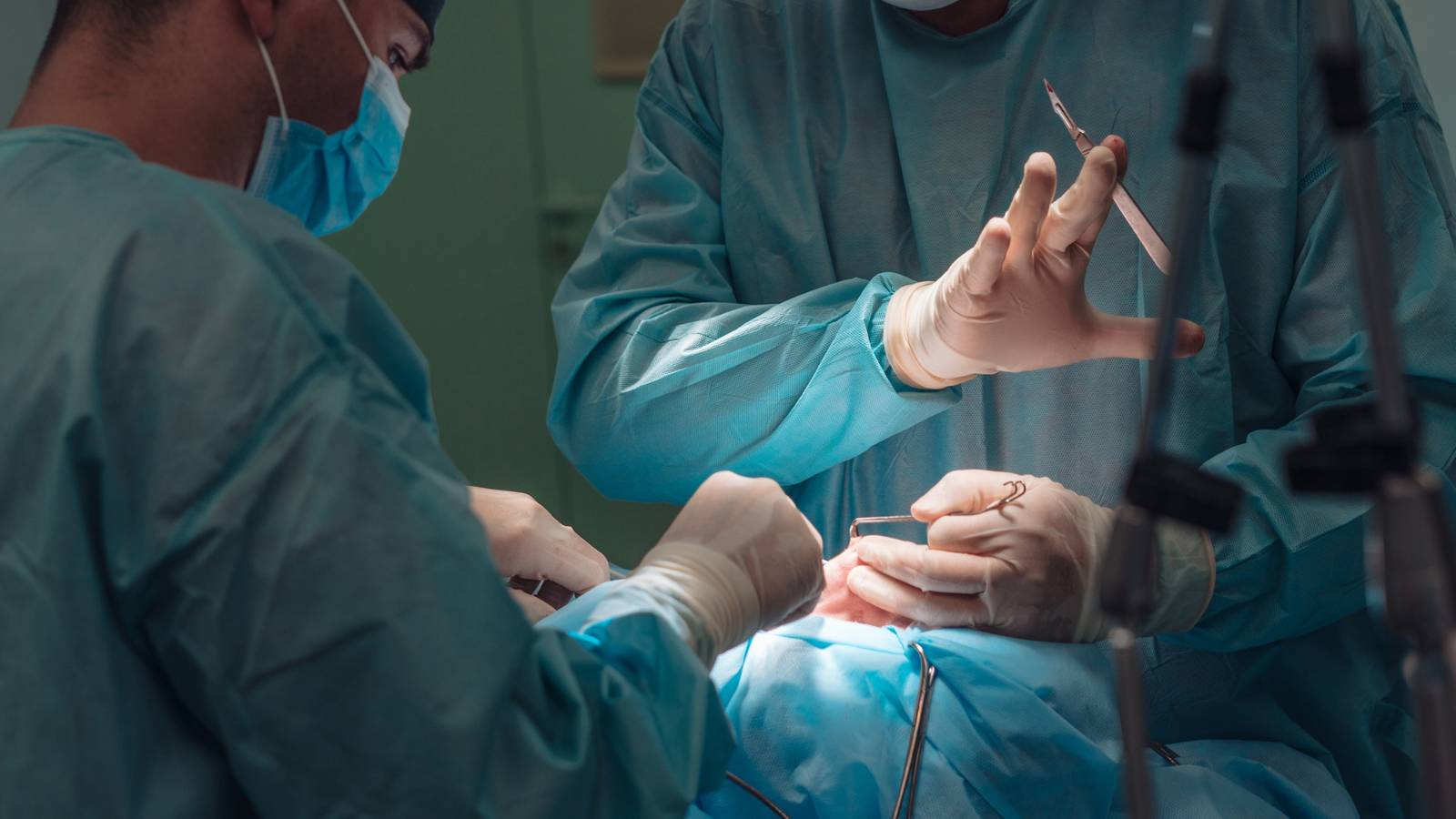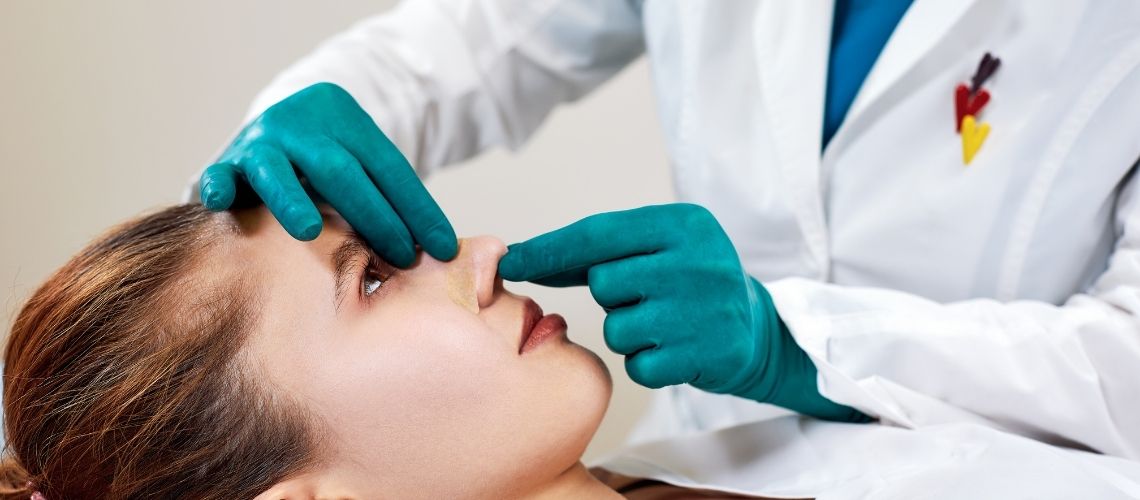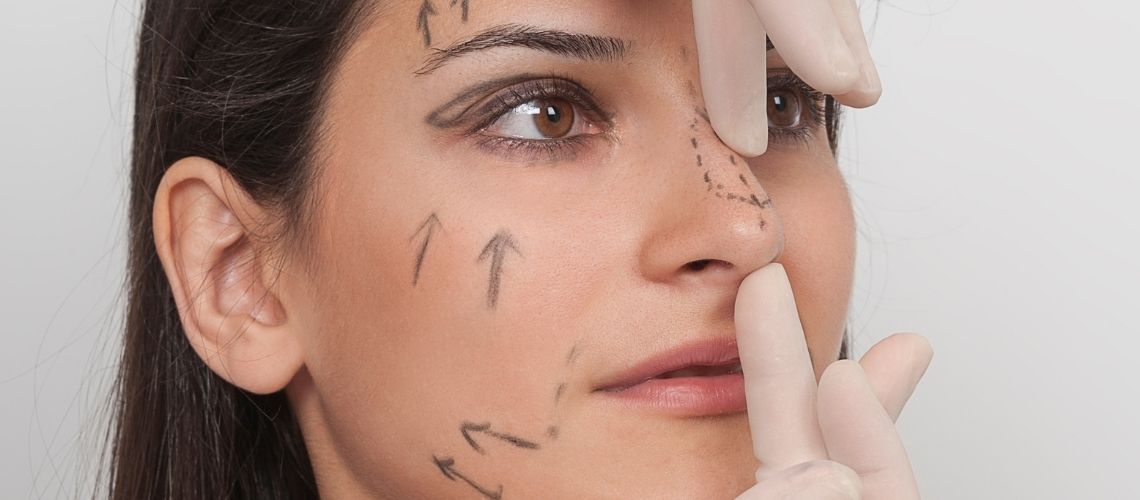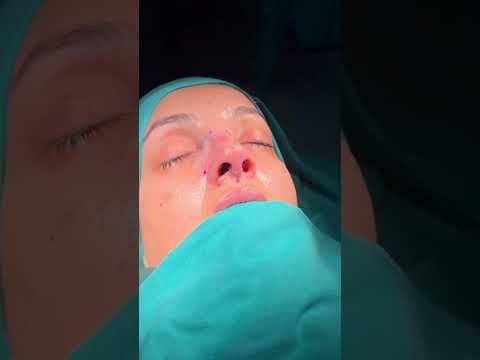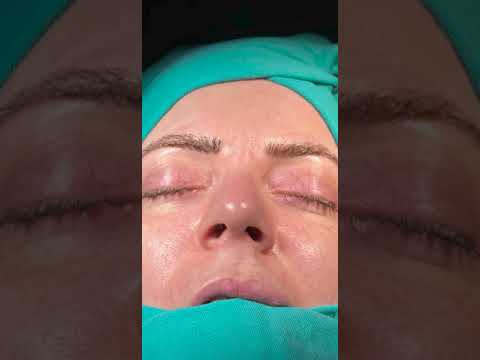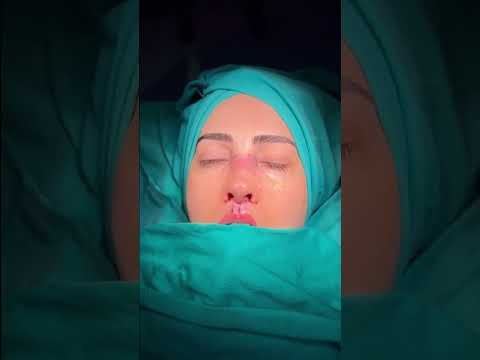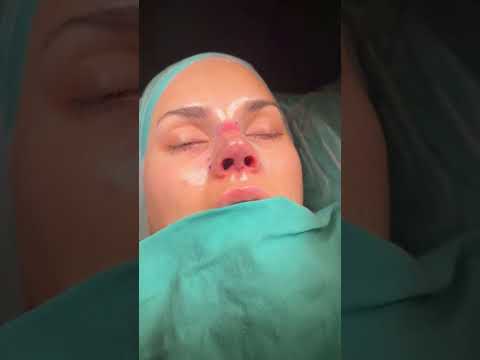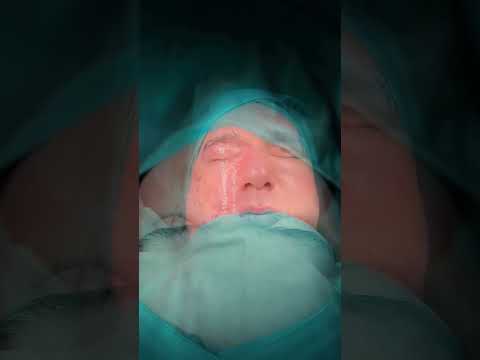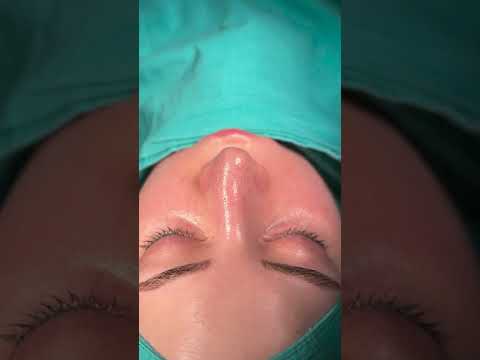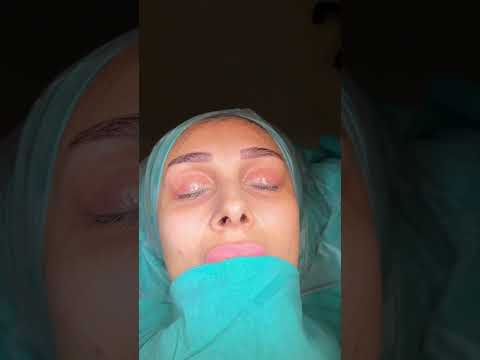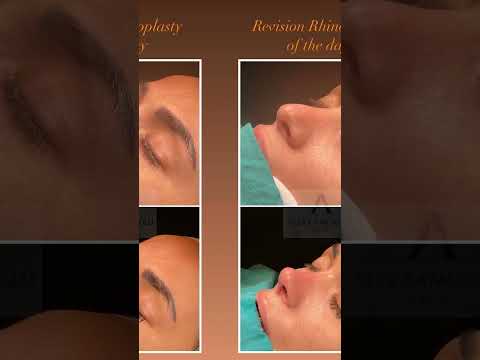Ethnic Rhinoplasty in Turkey
Preserving your cultural identity while enhancing your appearance is our priority with Ethnic Rhinoplasty in Turkey. Dr. Alev Camcıoğlu understands the nuances of different nasal structures and works diligently to respect your heritage. We customize each procedure to ensure harmonious results that honor your unique features.
Cost of Ethnic Rhinoplasty in Istanbul, Turkey ranges between €5,000– €7,000 in 2025 depending on hospital, package, and anatomy of your nose. Check our prices, before & after photos, and patient results from the USA, UK, Canada, Australia, and the rest of the world.
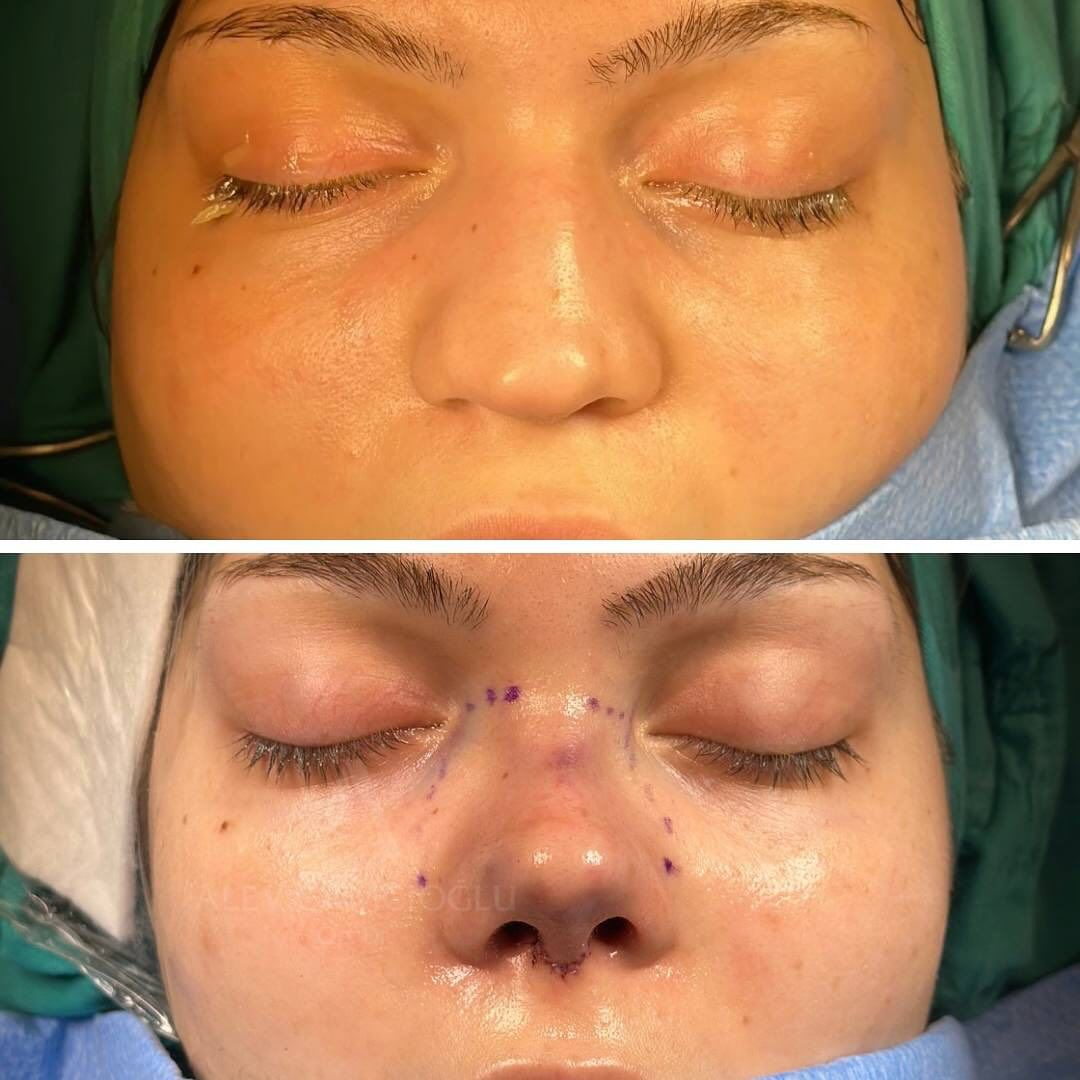
What is Ethnic Nose Aesthetics?
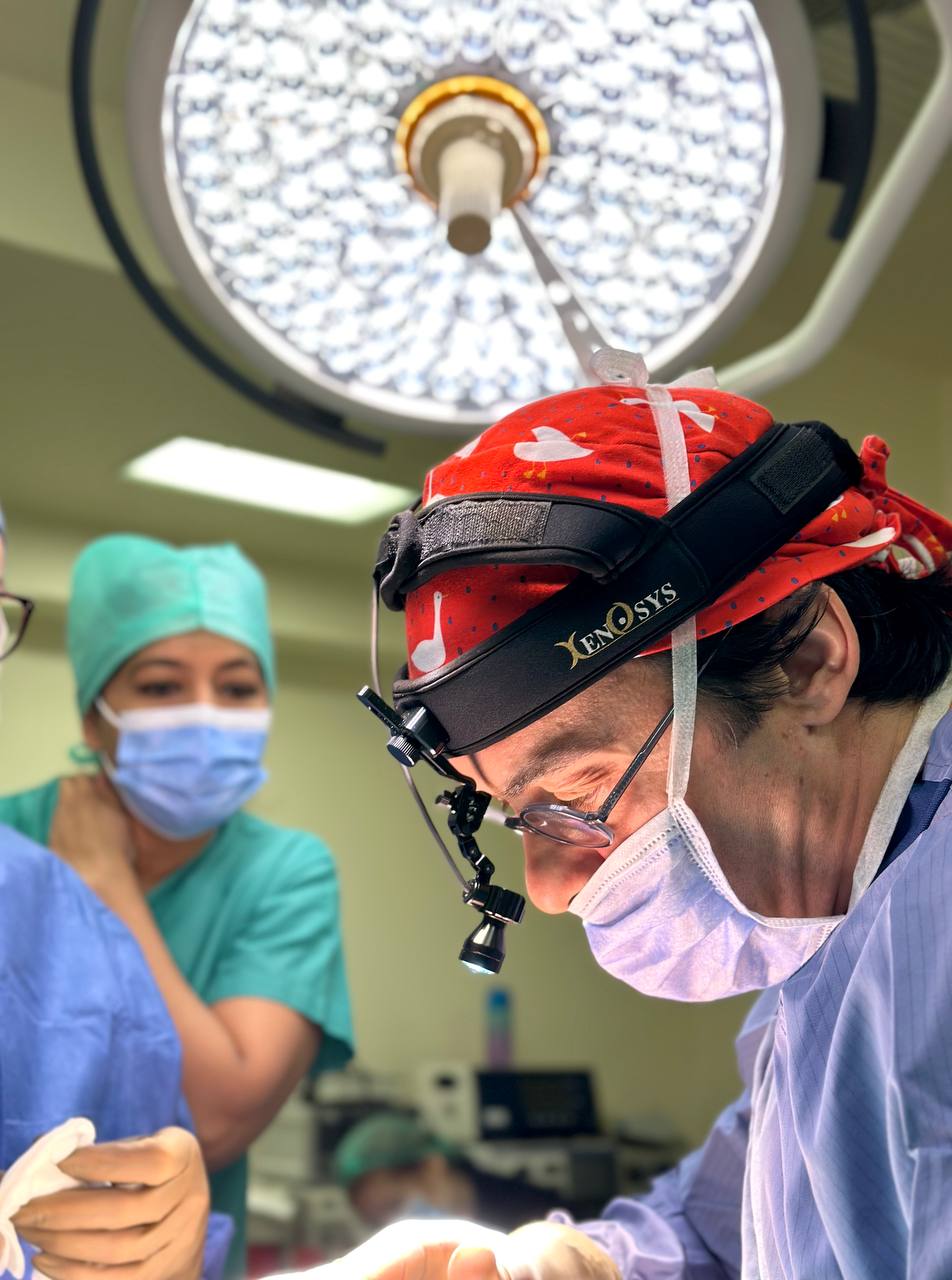
Ethnic nose aesthetics is a rhinoplasty approach that prioritizes the racial and cultural characteristics unique to each patient. This special surgical procedure, which considers ethnic differences, aims to achieve an aesthetic appearance that harmonizes with the individual’s natural facial features. During the operation;
- Aesthetic goals appropriate to the patients’ ethnic backgrounds are determined.
- Customized surgical techniques are applied to achieve the desired natural appearance.
- Planning is done in line with the aesthetic ideal unique to each patient’s facial structure.
What Are the Types of Ethnic Rhinoplasty?
Ethnic rhinoplasty tailors nose reshaping techniques to preserve and enhance the unique features of different ethnic backgrounds. The main types include:
- African-American Rhinoplasty
- Asian Rhinoplasty
- Middle Eastern Rhinoplasty
- Latino/Hispanic Rhinoplasty
- Mixed Ethnicity Rhinoplasty
- Indian Rhinoplasty
- Persian Rhinoplasty
- Mediterranean Rhinoplasty
- East Asian Rhinoplasty
- South-East Asian Rhinoplasty
- Native American Rhinoplasty
- Caucasian Rhinoplasty (Ethnic-Inclusive Adjustments)
What are the Types?
Ethnic rhinoplasty offers treatments suitable for nasal features unique to various geographical origins. These surgeries provide aesthetic improvements while preserving the anatomical structures unique to each ethnic group. These methods, customized according to the unique nasal structures of people from different regions, include:
- Asian rhinoplasty: Makes the Asian nose structure, known for its flatter bridge and wider nose tip, more pronounced.
- African rhinoplasty: Generally focuses on the wide nasal bridge and tip, regulating the width of the nostrils.
- Latin American rhinoplasty: Uses techniques suitable for the typically wide and thick nasal bridges of Latin Americans.
- Indian rhinoplasty: Adapts to the generally high nasal bridge and sharp tip features of Indian nose structure.
- Middle Eastern rhinoplasty: Suitable for Middle Eastern individuals, typically with a high nasal bridge and pronounced nose tip.
What are the Surgical Techniques?

- View from the operating room during a nose surgery
Ethnic Rhinoplasty is generally performed using two main techniques: open rhinoplasty and closed rhinoplasty. Both techniques aim to provide a harmonious and natural appearance while preserving the patient’s facial features.
Open rhinoplasty techniques:
- This method involves making a small incision between the nostrils.
- Direct access to the structure of the nose is provided, which is ideal for more complex corrections.
- The incision allows for the separation of structures under the skin and detailed adjustments to be made.
- This incision gives the surgeon more control over the nose.
Closed rhinoplasty techniques:
- The incisions are made inside the nostrils, leaving no external scars.
- It is less invasive and the recovery process is generally shorter.
- Preferred for minor corrections as the skin is not opened much during the operation.
- Bruising and swelling are less common compared to open rhinoplasty.
Both techniques can be adapted to meet different anatomical needs, especially in the context of ethnic rhinoplasty. Ethnic rhinoplasty usually includes special procedures such as adding a nasal bridge, extending the nasal tip, and narrowing the nostril entrances.
What are the Risks and Side Effects in Ethnic Rhinoplasty Procedures?
Ethnic rhinoplasty surgery, like any surgical procedure, carries some risks. Common side effects of this procedure include swelling and bruising. Swelling usually decreases within the first week after surgery. Bruising mostly disappears within a few weeks. Other possible complications include:
- Bleeding
- Infection
- Scarring
However, advancements in medical technology and anesthesia methods have reduced the likelihood of these risks occurring. The use of strong antibiotics significantly reduces the risk of infection and allows patients to recover faster. Therefore, the management of such side effects is more effective today.
6 Reasons to Get Ethnic Rhinoplasty in Istanbul






Post-OP
Care
Ethnic Rhinoplasty Before & After Photos in Turkey
How Long is the Duration of Ethnic Rhinoplasty Operation?
The duration of ethnic rhinoplasty operations may vary depending on the surgeon’s experience and the preferred techniques. Additionally, each individual’s anatomical structure and specific needs are factors that affect the duration. For example, situations requiring the use of rib cartilage may extend the procedure time. However, generally, these types of surgeries are completed within 2 to 4 hours. The post-operative process proceeds as follows:
- After the operation performed under general anesthesia, patients usually stay in the hospital for one night.
- Most patients can return to their normal activities the next day.
Swelling that may occur after the operation is normal and usually does not cause severe pain.
What are the Stages of Recovery After Ethnic Rhinoplasty?
The recovery process after ethnic rhinoplasty shows individual differences. Additionally, it varies depending on the surgeon’s recommendations. The first weeks are usually more challenging as swelling and bruising are most intense during this period. During this phase, patients are advised to rest and avoid straining their faces. After this initial phase of recovery, significant improvements are generally observed in patients’ conditions.
- First 24 hours: Applying cold compresses helps reduce swelling and bruising.
- First week: The face should be kept elevated and heavy exercises should be avoided.
- Second week: Most external bruises begin to disappear, and light walks can be done.
As recovery progresses, the results of the surgical intervention become clearer, and the results become increasingly natural. Full recovery usually takes a few months, and patience is required during this period.
What Precautions Should be Taken Before and After Ethnic Rhinoplasty?
To achieve successful results from ethnic rhinoplasty surgery, there are steps that must be carefully followed before and after the operation. The precautions to be taken during these important processes are as follows:
Before the Operation:
- After the deformities are identified, your doctor will plan the surgery.
- Wash your face with antibacterial soap.
- Get a good night’s rest.
- Do not eat or drink anything after midnight.
After the Operation:
- Keep your head elevated as much as possible throughout the day.
- Sleep on your back for the first month.
- Apply cold compresses for swelling.
- You can start light exercises one week after the surgery.
- Avoid wearing glasses for at least three months.
- Avoid sunlight for the first month.
- Avoid smoking and other tobacco products for at least one month.
- There may be temporary difficulty in breathing after the nasal tampons are removed.
- The nose will take its final shape between 6 months to 1 year.
Does Ethnic Nose Aesthetics Surgery Solve Breathing Problems?

- Doctor and female patient after nose surgery control
Ethnic nose aesthetics surgery permanently solves breathing problems. During the surgical procedure, deviations and enlargements inside the nose are corrected, and airways are opened. These procedures ease patients’ breathing:
- Deviation of the septum, which is the curvature of the internal cartilage and bone, is corrected.
- Nasal turbinate enlargements, called concha hypertrophy, are reduced.
How Much Does a Ethnic Rhinoplasty in Turkey in 2025 ?
The cost of a Ethnic Rhinoplasty in Istanbul, Turkey, typically ranges between €5,000 and €7,000. The price can vary depending on several factors, such as the surgeon's experience, the complexity of the procedure, the clinic's reputation, and additional services included in the package.
| Average Ethnic Rhinoplasty Cost (in Euros) in 2025 | |
| United Kingdom | €16,600 – €19,000 |
| United States | €14,200 – €23,400 |
| Canada | €16,000 – €19,000 |
| Australia | €23,800 – €37,800 |
| South Korea | €9,400 – €17,200 |
| Ireland | €13,000 – €15,000 |
| Germany | €11,000 – €13,000 |
| Netherlands | €11,000 – €13,000 |
| France | €11,000 – €13,000 |
| Turkey | €5,000– €7,000 |
Frequently Asked Questions
How long does ethnic nose aesthetics take?
The duration of ethnic nose aesthetics surgery is generally about two hours. However, this time may vary depending on the characteristics of the aesthetics and the difficulties encountered. In more complex cases, the operation time may extend up to four hours. Due to the personalized approach applied to each patient, the process may differ from the anticipated. Therefore, it is difficult to predict exactly how long the surgery will take in advance.
Is ethnic nose aesthetics more difficult?
Yes, ethnic nose aesthetics is more difficult. Since the nasal structures, skin thicknesses, and recovery processes of different ethnic groups vary, special surgical plans must be made for each patient. Additionally, these types of operations generally require more expertise and attention. Particularly for African-American and Asian patients, procedures for augmenting and adding cartilage to nasal structures are performed, while for Caucasian patients, procedures for reducing the nose and removing cartilage are generally applied. Therefore, it is important for surgeons to carefully plan, taking into account ethnic characteristics.
With which technique is ethnic nose aesthetics performed?
Ethnic nose aesthetics is performed with methods suitable for different ethnic backgrounds. Primarily, the patient’s facial structure and ethnic characteristics are taken into consideration. For individuals with African-American and Asian backgrounds, nose augmentation surgeries are performed using cartilage addition techniques. On the other hand, for Caucasian individuals, classical nose reduction operations are generally applied. These operations are carried out by maintaining the patient’s facial symmetry and highlighting their ethnic features. Therefore, these surgeries require extensive surgical experience and special techniques.
What are the differences between ethnic nose aesthetics and other types of nose aesthetics?
Ethnic nose aesthetics aims to preserve the patient’s ethnic identity and natural facial features. On the other hand, general rhinoplasty procedures usually do not focus on these characteristics. Ethnic aesthetic surgeries take into account anatomical differences such as skin thickness and nasal cartilage structure. This approach values the specific details unique to each ethnic group. Additionally, in ethnic rhinoplasty, special techniques such as nose augmentation and cartilage addition are often preferred. These make these types of surgeries more personalized and sensitive to cultural characteristics.
How much does ethnic rhinoplasty cost?
The cost of ethnic rhinoplasty varies depending on the surgeon’s experience, the complexity of the operation, and the geographical location. Generally, as the surgeon’s experience increases, so do the costs. Additionally, the difficulty of the operation and the techniques used also affect the price. Geographical location is also an important factor, as the cost of living is higher in some areas. Considering these factors, the cost of ethnic rhinoplasty can vary significantly.
One of the Best Clinic Team for Ethnic Rhinoplasty in Turkey
Dr. Alev Camcıoğlu is considered to be one of the best Ethnic Rhinoplasty surgeon in Turkey. You can check Ethnic Rhinoplasty reviews here.

Op. Dr. Alev Camcıoğlu
Rhinoplasty Surgeon

Aylin Uyuşmak
Clinical Coordinator

Serra Sevgili
Clinical Assistant

Sema Yapıcı
Operating Room Nurse




